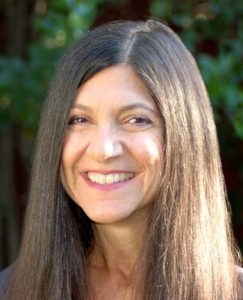Geography of Drug Markets and Child Maltreatment: How Practice Informs Research
By Bridget Freisthler, Ph.D. and Nancy J. Williams, MSW
Often, the research carried out on social welfare problems does not seem to affect what actually takes place in practice. Research seems inaccessible to practitioners; studies are designed and findings interpreted without input from those working in the field. In the case of this study, however, we have been able to use recent research findings combined with practice experience to help understand the findings and suggest clear and practical recommendations for the field.
The Study and Its Findings
The study was designed to enhance understanding of how illicit drug markets in neighborhoods place children at risk for being abused or neglected. We did this by examining drug markets across neighborhoods and over time. We found that referrals for child maltreatment investigations were less likely to occur in places where current drug market activity (as measured by drug possessions and drug sales) was present. However, when we looked at drug sales in the past year for both the neighborhood and nearby neighborhoods, we did find more referrals for child maltreatment. Neighborhoods with more drug possessions and drug sales during the study period had higher numbers of substantiated cases of child maltreatment in the months following. Neighborhoods with more cases of drug possession also had more cases in which children were placed into foster care. We hypothesized that the time lag between drug sales and child maltreatment referrals may: (1) indicate that the surveillance systems designed to protect children may not be very responsive to changing neighborhood conditions or (2) show that it takes time for drug sales to reach their users and for the detrimental effects of the drug use to appear.
Nancy’s Practice Example
Late one afternoon, I received an immediate response “Doe referral.” Typical of these types of referrals, it only referenced an address and a statement that a woman was residing in a tool shed with a newborn child. With such little information, I was left to depend upon my knowledge of the neighborhood area and my assessment skills. Through my ongoing collaboration with local community agencies and the local police officers, I was acutely aware that the area had been experiencing a surge in crack-cocaine sales and use.
The main house was not occupied, however, in the backyard I observed a baby blanket hanging from a clothes line. I spoke with an African American male who led me to an African American woman and an infant lying down on a dust-covered couch in a poorly ventilated shed. I attempted to engage the woman in conversation; however, her behavior appeared erratic and her statements were evasive, contradictory, and illogical. During this time, she wouldn’t let me examine the infant. When I pressed her, the woman suddenly picked up the infant and handed him to the same man I had spoken to before. She attempted to block me from leaving the yard with him. I eventually caught up with the man and the infant three blocks away. During this time, the woman disappeared.
The man appeared more coherent and was cooperative. He confirmed that the infant had been residing in the shed with the woman I had spoken to, who was the mother. A quick check of the infant showed signs of severe physical neglect including thin appearance, fungal infection in the mouth, cradle cap, dirty appearance, and a combination of scaring and extensive active diaper rash. The child also presented symptoms similar to crack-exposed newborn infants, including tremors, high-pitched cry, and being difficult to console. The child’s condition and circumstances in the neighborhood led me to have the child immediately assessed, including toxicological screening at a children’s hospital.
My initial assessment was confirmed. The infant tested positive for metabolites associated with crack-cocaine. He was taken into custody .While the mother’s extended family was found, the mother was never located again. This real example shows how knowledge of drug activity in a neighborhood can alert a caseworker to assess for specific effects related to a child’s well-being.
Recommendations
Based on the findings from the study and real examples, we concluded that reducing the time delay between drug market development and referrals for child maltreatment investigations may prevent some child maltreatment from occurring. The referral that Nancy received said nothing about possible drug activity or drug use. It was her first hand knowledge about local drug activity garnered from relationships with law enforcement that had her on alert. This suggests some natural partnerships including increased collaboration between law enforcement and child welfare caseworkers. Police could provide child welfare caseworkers with locations of emerging drug markets as they investigate new drug cases in these areas. Further, information on emerging drug market locations would allow caseworkers or other child welfare professionals to target these areas for prevention programming so that subsequent maltreatment does not occur. Finally, publicizing drug activity in local areas or implementing public awareness campaigns encouraging individuals to report suspected child abuse and neglect in neighborhoods where drug market activities are occurring might further prevent maltreatment.
Bridget Freisthler is a faculty member in UCLA’s Department of Social Welfare. Nancy J. Williams is a former caseworker for the Department of Children and Family Services and a current doctoral student at UCLA. A copy of the full study can be found at http://resources.prev.org/documents/DrugMarketsandMaltreatment.pdf.


